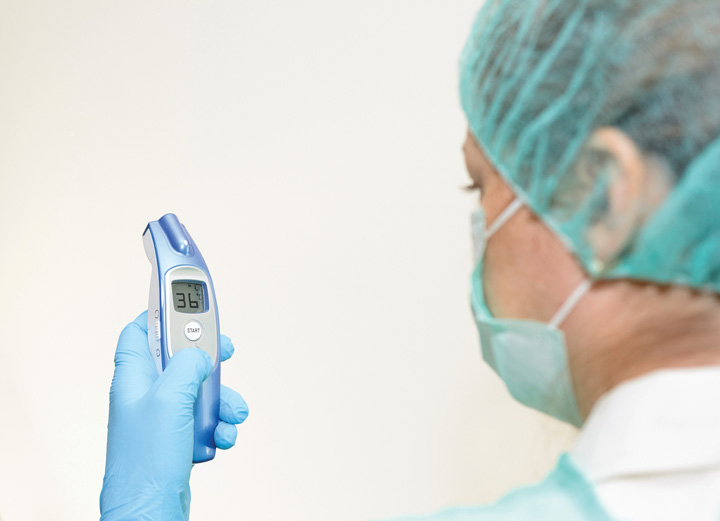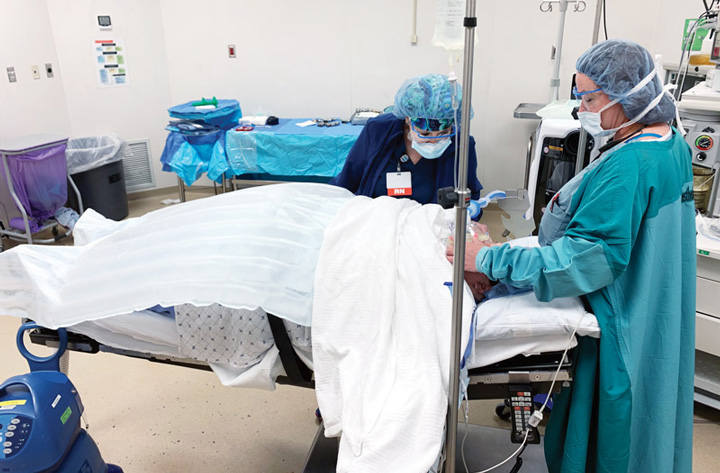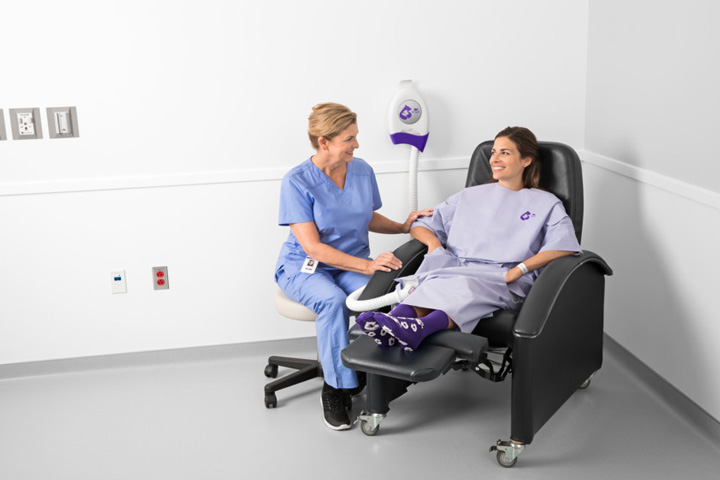Three keys to implementing — and sticking to — protocols that keep hypothermia at bay.
 CONFIRM AND RECORD Providers not only should consistently monitor patients’ temperatures, but also document those readings along the way.
CONFIRM AND RECORD Providers not only should consistently monitor patients’ temperatures, but also document those readings along the way.
Patient warming is a patient safety and patient satisfaction must for top-performing outpatient facilities. But this crucial area of practice also tends to require regular, consistent reminders from facility leaders to better ensure it remains top-of-mind among staff.
If you’ve found your warming efforts tend to cool over time, here are three ways to reignite interest and compliance among your teams.
Consistency is crucial. Meghan Quinn, RN, nurse administrator at Valley Surgery Center in Scottsdale, Ariz., believes effective warming protocols come down to consistent application, which requires buy-in from multiple stakeholders. “Standardization is a key factor in making sure a patient warming protocol is practiced the same way for every patient,” she says. To shape her facility’s protocol, Ms. Quinn worked with a team of nurses, physicians, surgical techs and anesthesia care professionals to draft a policy and procedure that includes each representative’s role in patient warming practices. She says anesthesia’s participation is especially important because that provider plays such a prominent role in patient warming and temperature monitoring.
Solid documentation is a must. This popular HR mantra also rings true with patient warming: If it wasn’t documented, it didn’t happen. Jill Hain, RN, clinical director at Urology Surgical Center in Lincoln, Neb., advises facilities to develop a clear plan for how a patient warming protocol will be completed and documented.
Case in point: At Ms. Hain’s facility, every patient warming encounter is documented in the patient’s chart to show all steps have been completed. She also runs a quarterly report for procedures lasting more than 60 minutes to evaluate those patients’ PACU temperatures at or below normothermia, and also uses a spreadsheet to track outcomes data according to the name of the anesthesia professional who was in the room for each surgery.
Talk it up. To keep enthusiasm for warming high and increase long-term sustainability, share practical, real-world examples of how it works in practice. “If the team realizes that this is not just something else to chart but something that ensures patients will have a better, happier stay, nurses will be on board,” says Ms. Hain.
.svg?sfvrsn=be606e78_3)



.svg?sfvrsn=56b2f850_5)